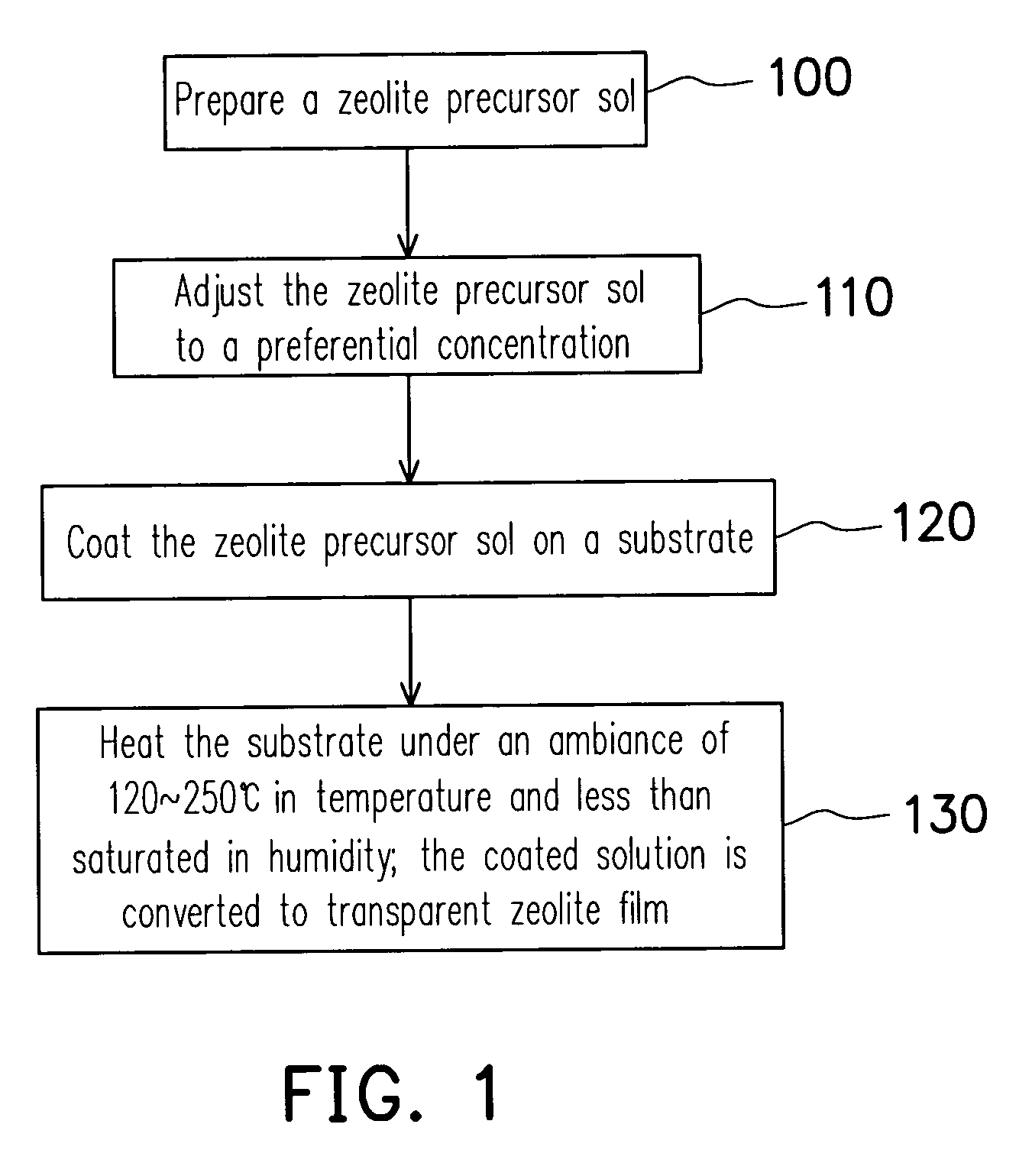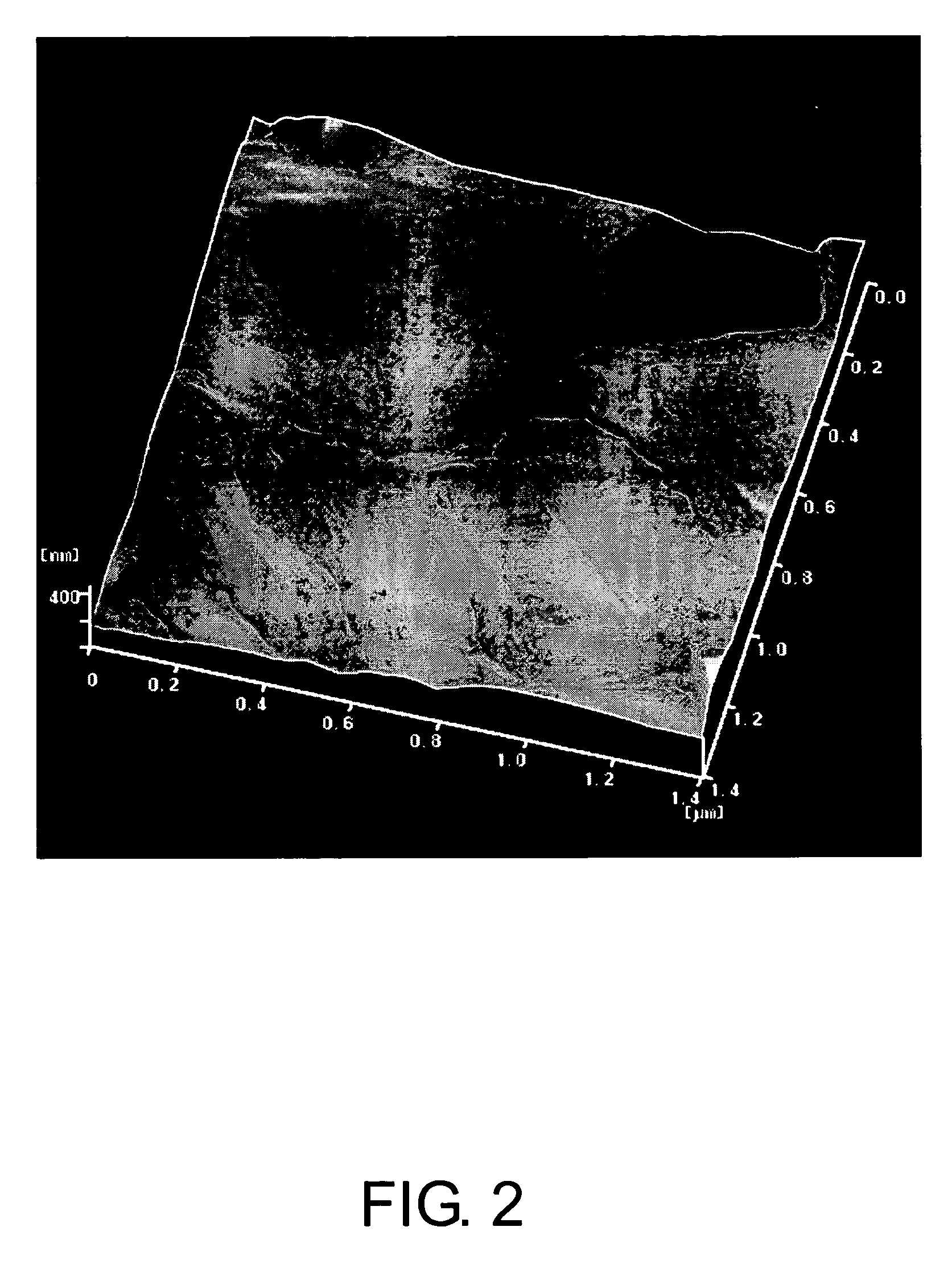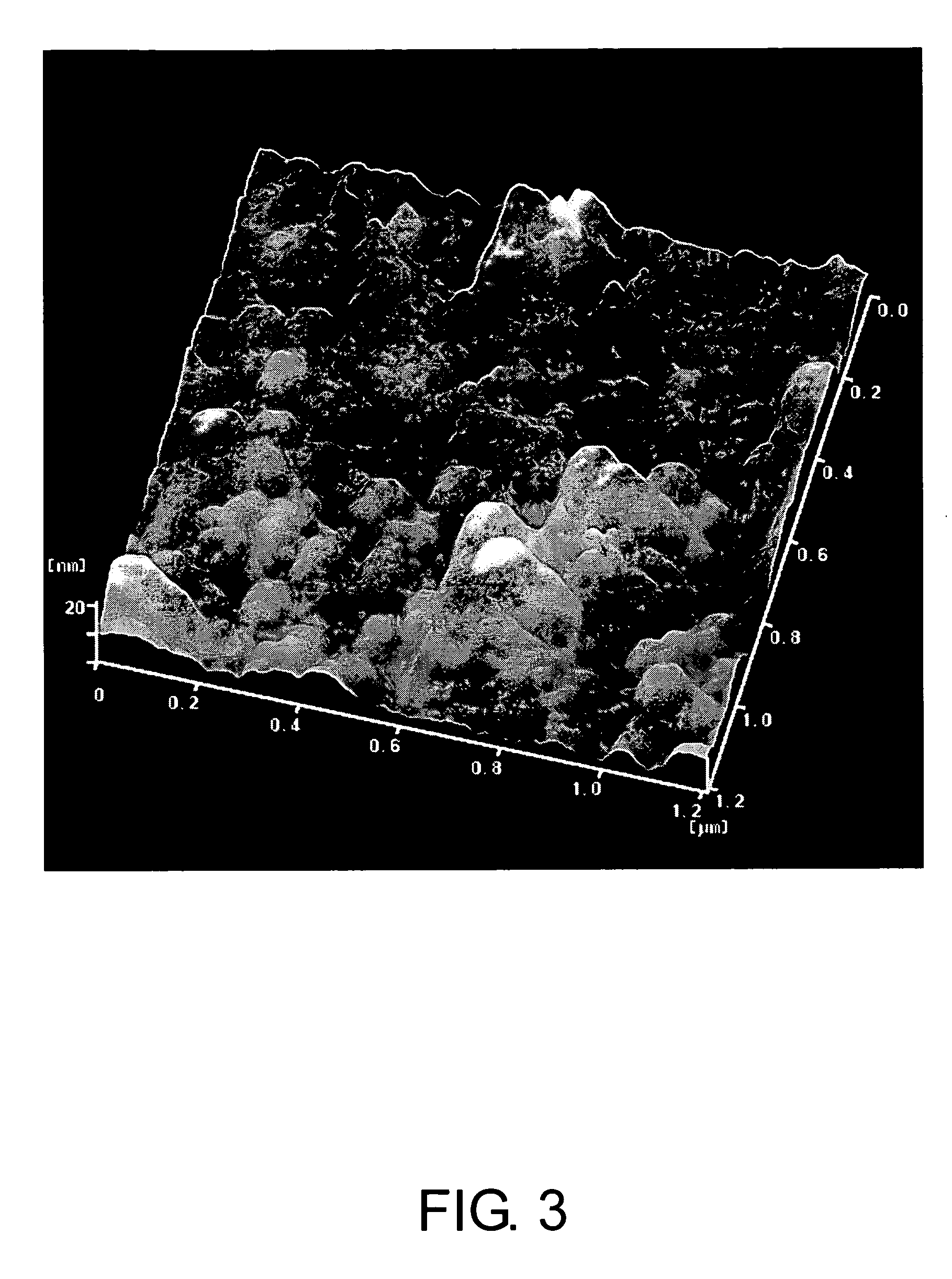Method for making transparent continuous zeolite film and structure of the zeolite film
a technology of continuous zeolite and transparent film, which is applied in the direction of other chemical processes, membranes, separation processes, etc., can solve the problems of difficult elimination of the inter-crystalline void and complicated procedures
- Summary
- Abstract
- Description
- Claims
- Application Information
AI Technical Summary
Benefits of technology
Problems solved by technology
Method used
Image
Examples
embodiment 1
[0030] 11.5782 gm of Tetraethoxysilane (TEOS,>98%) is dissolved in 7.0712 gm of aqueous tetrapropyl ammonium hydroxide (TPAOH, 40% aq) and 79.8 gm of deionized water. The mixture is stirred under room temperature for about 45 minutes to obtain a clear solution. The solution is then heated at 80° C. for 18 hours in a sealed bottle. The result is a clear precursor sol A for silicalite.
[0031] 0.3 gm of non-ionic surfactant Tween-20 was added to 40 gm of the above precursor sol A and stir for 10 minutes to prepare an undiluted coating sol A1. Take 4.02 gm of the A1 coating sol and dilute with 36.3 gm of 95% ethanol to produce the diluted coating sol B1.
[0032] Thoroughly washed glass slides were used as substrate and were dip coat with both A1 and B1 sol. The dip coating was made with 30 second of immersion, and pulling rate of 4 cm / min. The coated glass slides were dried at 80° C. for 1 hour and then put into a steamer as demonstrated in FIG. 1. The steamer was se...
embodiment 2
Effect of Different Surfactants
[0033] The same precursor sol A as prepared in EMBODIMENT 1 was used as the starting material to test the effect of different surfactant. In each case, 4.04 gm of the precursor sol was diluted with 36 gm of ethanol in which 0.036 gm of a non-ionic surfactant (tween-20m tween-60 and P123 respectively) was placed. 0.034 gm of ethylene Glycol was added to this diluted sol to complete the preparation of coating sol. Cleaned glass slides were coated with different coating sold and steamed and calcined as before. The surface morphology was then observed under AFM as demonstrated in FIG. 5. The case with tween-20 gave a surface with fine nanostructure and roughness less than 10 nm. That prepared with tween-60 gave larger particles arranged toward one direction. The one prepared with P-123 showed a few very large particles but otherwise very smooth surface. Finally, the diluted coating sol without any surfactant gave only large inter-grown crystals.
embodiment 3
The Necessity of Heating During Precursor Preparation
[0034] The same mixture of TEOS / TPAOH and water as described in EMBODIMENT 1 was prepared and split into two parts. One part was heated to 80° C. as before, while the other part was used without the heating step. Both solutions were then diluted with ethanol and added with tween-20 as before. Glass slides were then coated with both types of the coating sols then steamed and calcined as usual. As observed in FIG. 6, the one prepared from un-heated precursor gave a broader particle size distribution while the particles produced from the heated sol was more uniform. The ratio of surfactant to silica did not affect the morphology of the coating produced from the heated precursor but markedly changed that of the coating produced from the un-heated precursor sol. However, the optical transmittance of both coating were better than 95% as demonstrated in FIG. 7.
PUM
| Property | Measurement | Unit |
|---|---|---|
| temperature | aaaaa | aaaaa |
| temperature | aaaaa | aaaaa |
| temperature | aaaaa | aaaaa |
Abstract
Description
Claims
Application Information
 Login to View More
Login to View More - R&D
- Intellectual Property
- Life Sciences
- Materials
- Tech Scout
- Unparalleled Data Quality
- Higher Quality Content
- 60% Fewer Hallucinations
Browse by: Latest US Patents, China's latest patents, Technical Efficacy Thesaurus, Application Domain, Technology Topic, Popular Technical Reports.
© 2025 PatSnap. All rights reserved.Legal|Privacy policy|Modern Slavery Act Transparency Statement|Sitemap|About US| Contact US: help@patsnap.com



